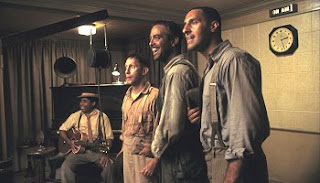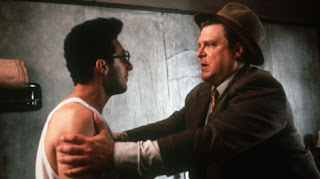no matter how im feeling on a day or how stressed out i may get, filming is the escape for it all. when i think about work i have to do, i may feel overwhelmed. but once im out, with a camera, all the problems dissapear. i dont think about all the bad things, i just enjoy filming.
i try to create an image that the audience is going to look at and realize that there is something in the frame catching their eye, but they just cannot figure it out. i love making images that are very subtle with their point, yet emphasises that point. some of my biggest influences use this style. with film, there are endless possibilites of combinations using the frame, lighting, and music. i love shooting with natural light and using close ups. these bring the audience into the shot more. i try to convey what our eyes see, but in a way that our brain does not notice. a camera expresses what we see in a way we cannot, and expresses how i feel in a way i cannot.
Thursday, April 29, 2010
Tuesday, April 27, 2010
DP-Roger Deakins
The DP that i chose to study is Roger Deakins. Roger Deakins has done many works, most notably with the Coen brothers, as he has been their main cinematographer for several films. Deakins started out in still photography, but moved to film work as a way for a career. Originally, Deakins was interested in documentary and that style, but soon began working on dramas and other films. Deakins has an extensive resume and his style can change to please his directors.
The thing i enjoy about Deakins work is the variety he can create. Look at 'O Brother Where Art Thou' which is bright, colorful, and fun and compare it to "Fargo" which has a dimmer look, with a lot of black and while colors. however, his frames are always visually interesting and he makes great use of subtle things on a set that catch the viewers eye, things like symmetry and depth.
Deakins has talked about his different styles, adn how with different directors he can do different things. Even just for teh coen brothers Deakins will show variety. Deakins says that the more he is able to work with a director the more they can explore more ideas and get more complex, but even as teh difficulty increases the understanding and ease increases.
One can look at 'Fargo' and see a simple scene, a lot of snow and night shots with a static frame. That movie is played in masters and X2 coverage shots, not too much camera movement. However in 'Barton Fink', Deakins uses much more camera movement to guide the action. The camera is more involved than in other films, but this variety adds to Deakins ability. He is able to make a simple shot very compelling with angles and depth, and he collaborates with teh Coen Brothers perfectly.

"O Brother, Where Art Thou"

"Barton Fink"

"Fargo"
The thing i enjoy about Deakins work is the variety he can create. Look at 'O Brother Where Art Thou' which is bright, colorful, and fun and compare it to "Fargo" which has a dimmer look, with a lot of black and while colors. however, his frames are always visually interesting and he makes great use of subtle things on a set that catch the viewers eye, things like symmetry and depth.
Deakins has talked about his different styles, adn how with different directors he can do different things. Even just for teh coen brothers Deakins will show variety. Deakins says that the more he is able to work with a director the more they can explore more ideas and get more complex, but even as teh difficulty increases the understanding and ease increases.
One can look at 'Fargo' and see a simple scene, a lot of snow and night shots with a static frame. That movie is played in masters and X2 coverage shots, not too much camera movement. However in 'Barton Fink', Deakins uses much more camera movement to guide the action. The camera is more involved than in other films, but this variety adds to Deakins ability. He is able to make a simple shot very compelling with angles and depth, and he collaborates with teh Coen Brothers perfectly.

"O Brother, Where Art Thou"

"Barton Fink"

"Fargo"
Monday, April 19, 2010
Direct a Scene
this is a short film, all one scene. enjoy!
directed by johnny hanna, director of photography micah russell, actor milton ragsdale.
directed by johnny hanna, director of photography micah russell, actor milton ragsdale.
Guns and Pills from UA, Telecommunication and Film on Vimeo.
Wednesday, April 14, 2010
reels.
i believe a director or dp has a few options for good shots for their reel. first, if there is a take from any film you have done previously, then it can be used. this may be a funny scene. nice composition, it may be special to you for some reason, or it just may be a shot that you enjoy seeing. besides shots already done, there may be some shots that are floating around in your head that do not specifically belong or fit in to a film. these can be shot for the hell of shooting them, and they are great in a reel because so much time and energy will be put into that one shot, instead of that shot being lost in the shuffle of all the takes done for a movie. i have two ideas for shots for my reel, both are individual shots that i just want to take. i also have some good ideas about movement, but may be limited by equipment. how about a camera on a bike?
$$$$ shot
i think the money shot is a shot that a director or DP knows they have while they are shooting it. there is just something that feels different about a money shot, that feeling is what i think tells you it is a money shot. once you cut on that shot, you walk away smiling at the take. this shot is going to be visually compelling, and something about the scene will call for more attention than the other scenes. there does not have to be only one money shot in a film, each sequence in the film can have its own money shots. these shots stand out above the others for their visual composition, framing, lighting, and action in the scene. it all makes for a special take.
Subscribe to:
Comments (Atom)